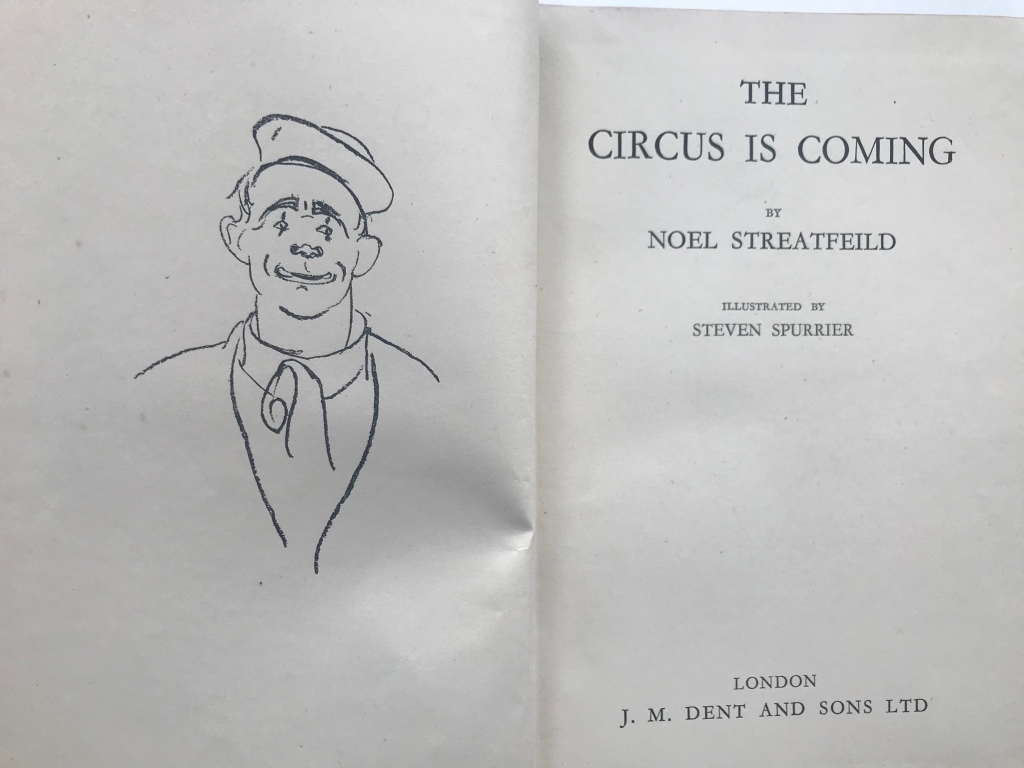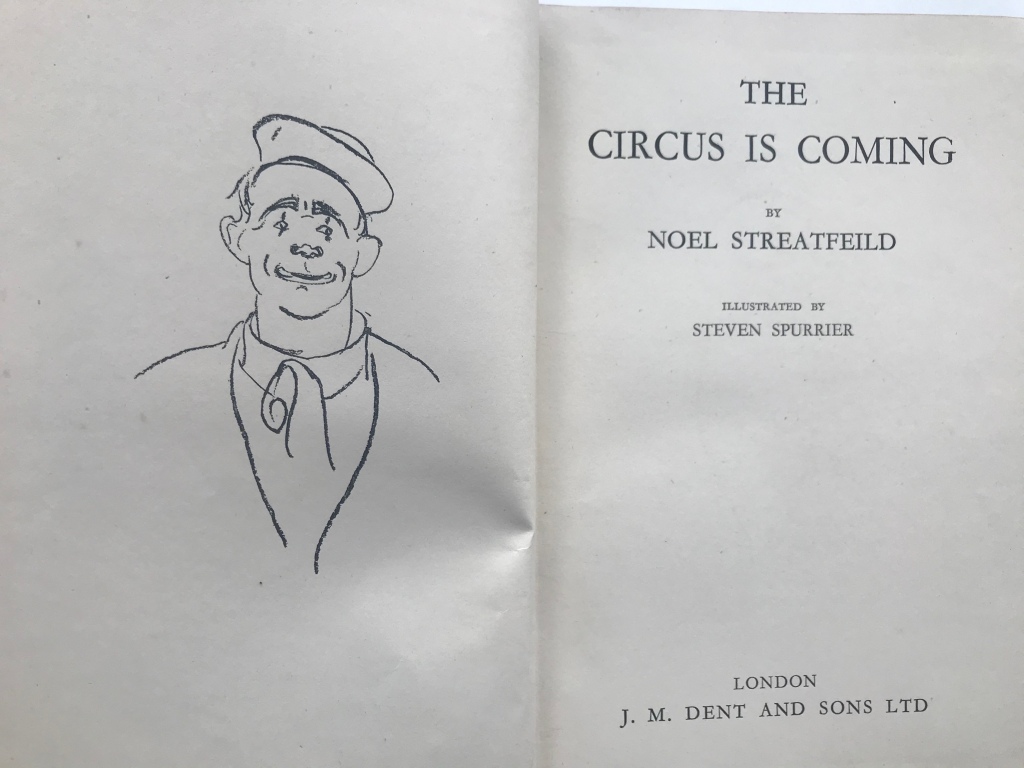
The Circus is coming by Noel Streatfield (1938)
“Still perhaps Noel Streathfield’s most popular book” said Margery Fish in 1964. I would think that this accolade now belongs to Ballet Shoes which is currently available both in hardback and paperback and following the success of Ballet Shoes, The Circus is Coming was reprinted under the title ‘Circus Shoes’. The version I have read is in the original title, a reprint from 1939 and with illustrations by Steven Spurrier. Circus Shoes is not currently in print but the latest reprint was in 2006 so there are plenty of copies in circulation.

Like The Family from One End Street, this is also a book about working class families though in a completly different and in some ways much more exotic context. Peter and Santa face being sent to an orphanage but run away to live with their uncle who works for a circus. Peter and Santa have been brought up by a prim aunt to feel they are better than everyone else but quickly realise that they have no skills and no way of looking after themselves. This is set in constrast to the detailed description of dedication and hard work of all members of the circus who pitch in and help get the show on the road every day.
The circus is made up of people of all kinds of different nationalities, each with their own skill and expertise. In contrast to some contemporary books, it is not jingoistic at all; Peter and Santa are portrayed as ‘backward’ because they are neither good at school (in contrast to the international circus children who go to school in every town they come to and do exceedingly well) nor do they have any skills with which to make their living. The story is really about the journey they make to understand that they are not automatically ‘superior’ to everyone else they meet, as they have been brought up to think, and overall the storylinee feels quite multi-cultural and inclusive.
Keith Barker mentioned that the choice of The Circus is coming was controversial at the time, particularly when children’s librarians discovered that ony two members of the selection committee attended the meeting when it was chosen. Now it is probably more controversial because public opinion on the use of wild animals in a circus has changed. This was not so much the case when the book was published, though there is a discussion on the morality of using wild animals in the book, and all members of the circus are exceedingly loving and understanding of their animals.
Noel Streatfield’s books tend to be described as ‘career books’, a popular genre in the 1940s and 1950s about superficially glamorous careers in various professions, like Streatfield careers in dance or the theatre or for instance with books about nursing (the ‘Sue Barton’ books). But some of the glamour is stripped away to show the hard work that lies behind any successful career.
There’s lots of technical detail based on Streathfield’s own research when she herself went ‘tenting’ but the story is first and foremost character-driven. This makes it a really enjoyable book for those of us who are not that interested in the circus as a performance while the technical detail adds a sense of reality and historical interest – a 8.5 out of 10.